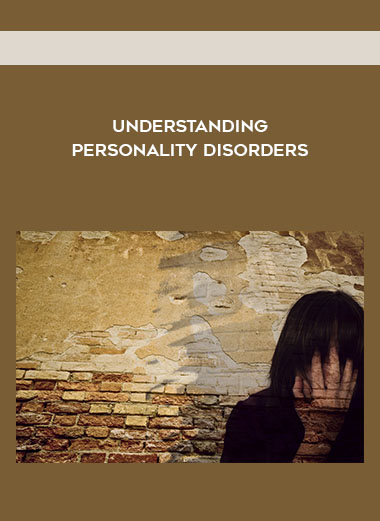understanding personality disorders
Chances are pretty good that you already know somebody with a personality disorder. You may not know the name of the problem and, in fact, the person may not even have been formally diagnosed by a medical professional. However, you can’t help shaking the feeling that something is “off”. One of the most serious of all personality disorders is borderline personality disorder; unfortunately, it is also one of the most difficult to effectively treat. However, there are other personality disorders that can wreak havoc on patients and, because of the nature of the diseases, their loved ones. Although symptoms can very from patient to patient, people with personality disorders share both an inability to regulate their emotions and a knack for alienating those closest to them. Many of these patients can be very unpleasant to interact with and are generally not very satisfied with their current circumstances (with some notable exceptions). Sadly, this dissatisfaction seldom improves even if the situation does. Medical professional have been able to determine that personality disorders tend to center around a few major characteristics.
Risk-Averse Personality Disorders
The first category of personality disorders causes anxiety, fear, and, sometimes, an overwhelming concern for what others may think. People with these disorders tend to avoid risky situations in order to stay safe, both physically and emotionally. Avoidant personality disorder affects as much as five percent of Americans and manifests in withdrawal from interacting with others due to feelings of inadequacy. Although they do want to have relationships, people with this disorder are too afraid of being rejected. To the outside world, these patients seem like social misfits and milquetoasts. In their professional lives, people with avoidant personalities will often underachieve because they are unable to engage in the type of interpersonal interaction required succeed in the business world. Obsessive-compulsive personality disorder also fits into this category, to some extent. This personality disorder should not be confused with obsessive-compulsive disorder, which manifests in a debilitating repetition of thoughts or actions. People afflicted with obsessive-compulsive personality disorder are highly detail-oriented and make no apologies for it (as opposed to people with obsessive-compulsive disorder who realize something is wrong with them). OCPD is characterized by an inflexible adherence to a schedule, rules or way of doing things. Many people with this disorder are workaholics and, for lack of a better word, cheap. Unlike people with avoidant personality disorder, however, people with OCPD are happy with their lives.
“Odd” Personality Disorders
The next group of patients simply seem odder than “normal” people; researchers have found that genetics can play a major role in these illnesses. The personality disorders in this group include the schizoid, schizotypal and paranoid types. Unlike those with borderline personality disorder, these patients typically prefer to stick to themselves and shun social contact with others. A hallmark of these disorders is that the patients often have a different perception of reality than other people. Someone who is “paranoid” is suspicious of everything and everyone. They are easily hurt or offended, often without cause, and are very reluctant to forgive real or, even, perceived slights. The paranoia results in the patient actively seeking out evidence that loved ones have betrayed them. Upwards of five percent of adults suffer from this disorder. These patients are very difficult to treat as they tend to place the blame for their problems on others, instead of on their disordered thinking. What’s more, the distrust inherent in their disease makes it unlikely that they will actively seek out or cooperate in treatment for fear that information revealed during sessions could be used against them. affects fewer people than paranoid personality disorder and is characterized by an overriding desire to be left alone. Very few schizoid patients have close relationships with others and they tend to be regarded as unapproachable, unlikeable or both. Patients with schizoid personality disorder have been unable to learn the normal social cues that we take for granted and are not motivated by what others may think of them; this often results in underperformance at work or school. Patients with this disorder shy away from stimulation of any kind, including physical contact with other people. Because a schizoid person actually enjoys the life they are leading, very few will actively seek treatment for the disorder. Like schizoid patients, schizotypal patients also prefer to be left alone and are lacking in the ability to interact socially with others. However, unlike schizoid patients, people with schizotypal disorder become anxious around other people and actually exhibit bizarre behaviors and have atypical thoughts. Some of these patients will have delusions of grandeur or even paranoia and, at times, there can be little to differentiate between a schizotypal patient and a schizophrenic.
Dramatic Personality Disorders
Patients with the final type of are dramatic and much more unpredictable than those who exhibit the “odd” behaviors of paranoids and schizoids. Many of the patients in this group do everything “big” – they can be seductive, hostile emotional, selfish or shocking and rarely care about how others feel. A hallmark of this type of illness, however, is that the reactions or behaviors are not usually exhibited on purpose. falls squarely in this category.In addition to BPD, personality disorders in this category include the antisocial, narcissistic and histrionic varieties. Although we already use the term “antisocial” to describe people with what we perceive as social defects, people who are truly antisocial have very specific characteristics that would cause most level-headed people to avoid contact at all costs. Unfortunately, antisocial people are also master manipulators and can come off as charming and likable in order to get what they want. Antisocial people do not really care about other people, nor do they feel remorse for bad things that they do. They also do not respect the rights of others and do not feel compelled to follow societal rules or laws. This disorder targets primarily males, and runs rampant in our current prison populations. Unlike people with antisocial personality disorder, people with histrionic personality disorder would never try to make you believe that they are normal. They crave attention and pay particular attention to they way they look and dress — they want to be noticed. Many histrionic patients come on strong sexually, and have an overly dramatic style of speech and expression. The incredible self-centeredness of histrionic personality disorder comes from lack of self-esteem and makes it very hard to have long-term relationships. The final disorder in this category is narcissistic personality disorder. Although it may seem that narcissism is very common in our society, the actual disorder only affects about one percent of people in the US. Don’t confuse this disorder with health self-esteem or even ordinary selfishness. People with this disorder seek out attention but, unlike those with histrionic disorder, really do think that they deserve it. They come across as arrogant and self-important. If you know someone who has characteristics that span across more than one of these personality disorders, it’s possible that they carry the diagnosis of “personality disorder not otherwise defined.” Mental health professionals use this label for people who don’t quite fit the formal definition of one of the established disorders, but clearly have problems with emotions and relationships.








